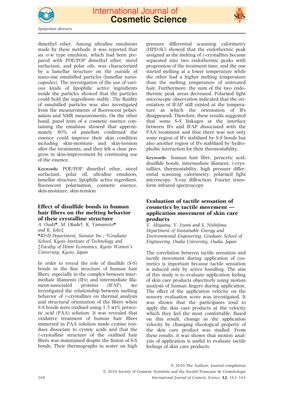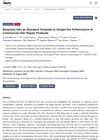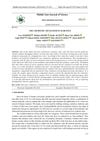Effect of Disulfide Bonds in Human Hair Fibers on the Melting Behavior of Their Crystalline Structure
March 2010
in “
International Journal of Cosmetic Science
”
disulfide bonds human hair fibers alpha-crystallites thermal analysis oxidative treatment peracetic acid cystine residues cysteic acids high-pressure differential scanning calorimetry endothermic peak polarized light microscopy intermediate filament-associated proteins intermediate filaments hydrophobic interactions hair fibers crystallites cystine calorimetry microscopy IFAP IFs

TLDR Disulfide bonds affect the melting behavior of hair's crystalline structure, but hair retains some stability even after these bonds are broken.
In the study titled "Effect of disulfide bonds in human hair fibers on the melting behavior of their crystalline structure," researchers Osaki, Okada, Yamamoto, and Joko explored the role of disulfide bonds in the structure of human hair fibers. They specifically examined the relationship between the melting behavior of alpha-crystallites during thermal analysis and the structural orientation of hair fibers when disulfide bonds were oxidized using a 1.5 wt% peracetic acid solution. The study found that oxidative treatment with peracetic acid caused cystine residues to dissociate into cysteic acids, but the alpha-crystalline structure of the oxidized hair fibers was maintained despite the breaking of disulfide bonds. High-pressure differential scanning calorimetry showed that the endothermic peak associated with the melting of alpha-crystallites split into two separate peaks, one melting at a lower temperature and the other at a higher temperature than untreated hair. Additionally, the sum of the areas of these two peaks decreased. Polarized light microscopy revealed that the orientation of intermediate filament-associated proteins (IFAP) persisted even after the orientation of intermediate filaments (IFs) disappeared. These results suggest that some disulfide linkages at the interface between IFs and IFAP dissociated with the peracetic acid treatment, indicating that regions of IFs are stabilized by disulfide bonds and others by hydrophobic interactions for their thermostability.



